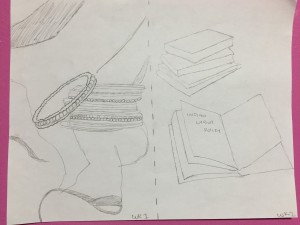For the final project, I would like to base my photographs off of the story, Birdie Num-Num by Lavanya Sankaran. This story is about Tara Srinivasan, her mother, and their very different point of views regarding Tara’s future. While Tara is visiting her parents in Bangalore, India, she is focused on completing her PhD. Her mother, however, has other plans for her. Tara is now 27 years old and she doesn’t even have a significant other in her life. Since Tara has no intention of fulfilling her mother’s wishes and getting married anytime soon, Mrs. Srinivasan takes matters into her own hands. Mrs. Srinivasan plans a cocktail party to market her daughter to potential buyers, which she refused to admit to Tara, claiming it was just a warm homecoming party in her honor. All of Mrs. Srinivasan’s friends had grandchildren, she was the only one without grandchildren and an unwed daughter. Whatever selfish reasons Tara had for not wanting to get married, she had to realize that none of that no longer mattered. More than enough time had passed, it was her duty and obligation as a daughter to give her mother what she wanted most – grandchildren. This was the way it had always been, it was all Mrs. Srinivasan knew – it was all part of the social contract.
“Birdie Num-Num” is an ideal representation of parental expectations, traditional gender roles, and perhaps most importantly – societal pressures. For each photo shoot, I would like my subject to represent the point of views of both Tara and her mother.
1) The mood of the first photo shoot is bright, happy, colorful, typical of a wedding. The second photo shoot is more serious since it represents Tara’s focus on completing her thesis for her PhD and what she would rather be doing.
2) Both of my approach is pretty literal instead of metaphorical because it is easy to interpret.
3) My approach will be a still life. I would prefer if my pictures had a sense of mystery to them. By not having models in my photographs, I think it makes viewers wonder whether not someone is getting married or whether or not someone is making use of these books and studying.
4) Not Applicable
5) For the first week, I plan on photographing bangles and a shawl, two very important items in an Indian wedding, in order to represent Mrs. Srinivasan’s point of view. The next week, in order to represent Tara, I would like to photograph a stack of books and maybe a wine glass.
6) I would prefer to use brighter, even lighting for the first shoot. For the second shoot, I would like the lighting to be a little more moody.
7) I’d like both photo shoots to be shallow depth of field.




